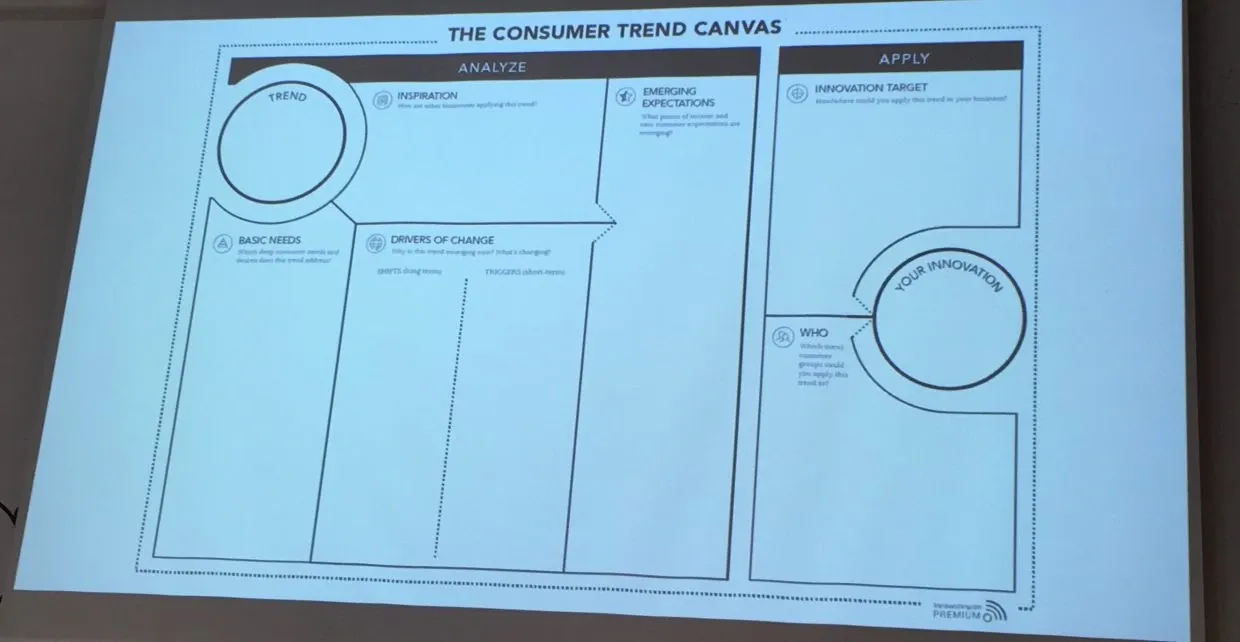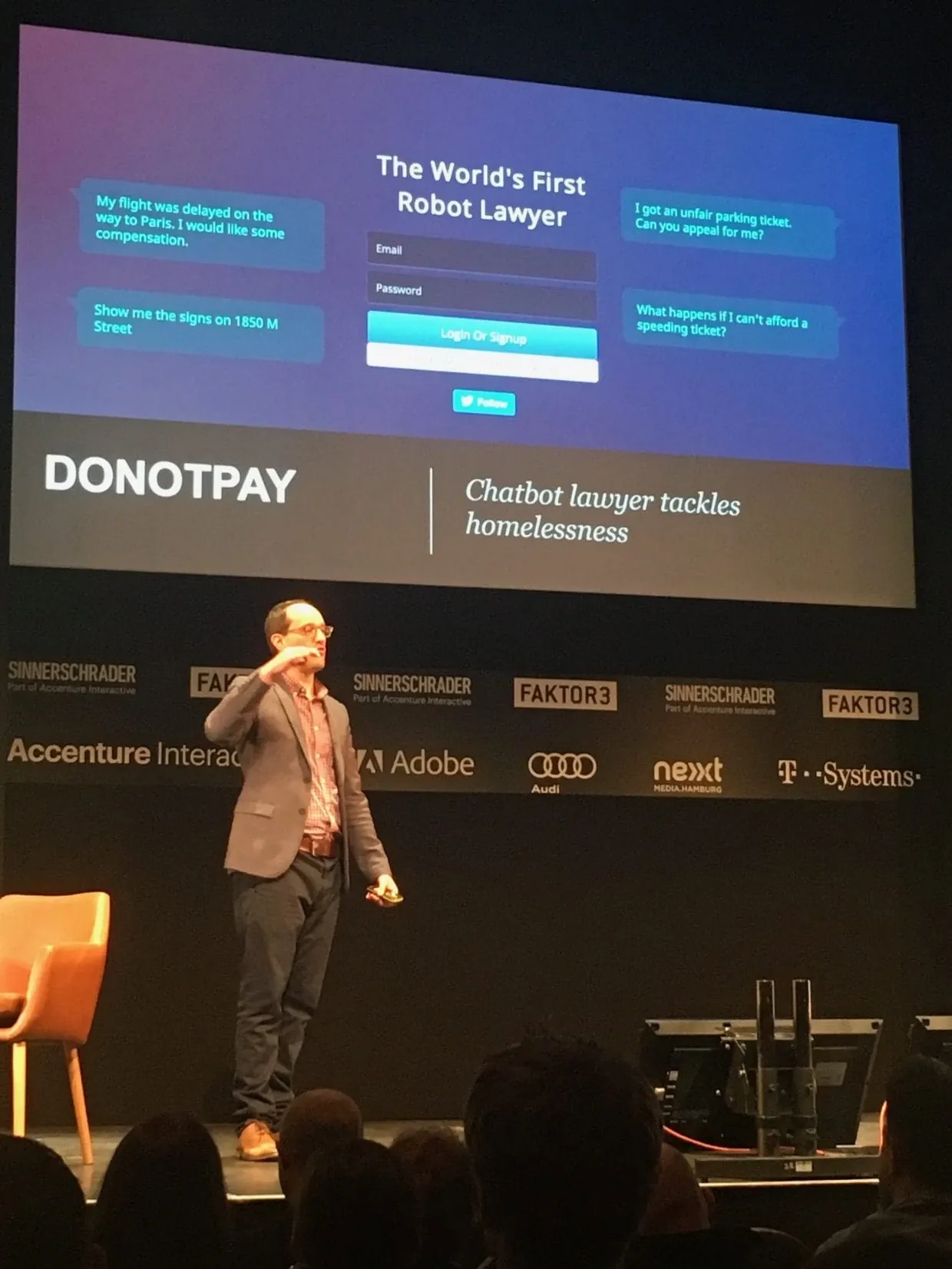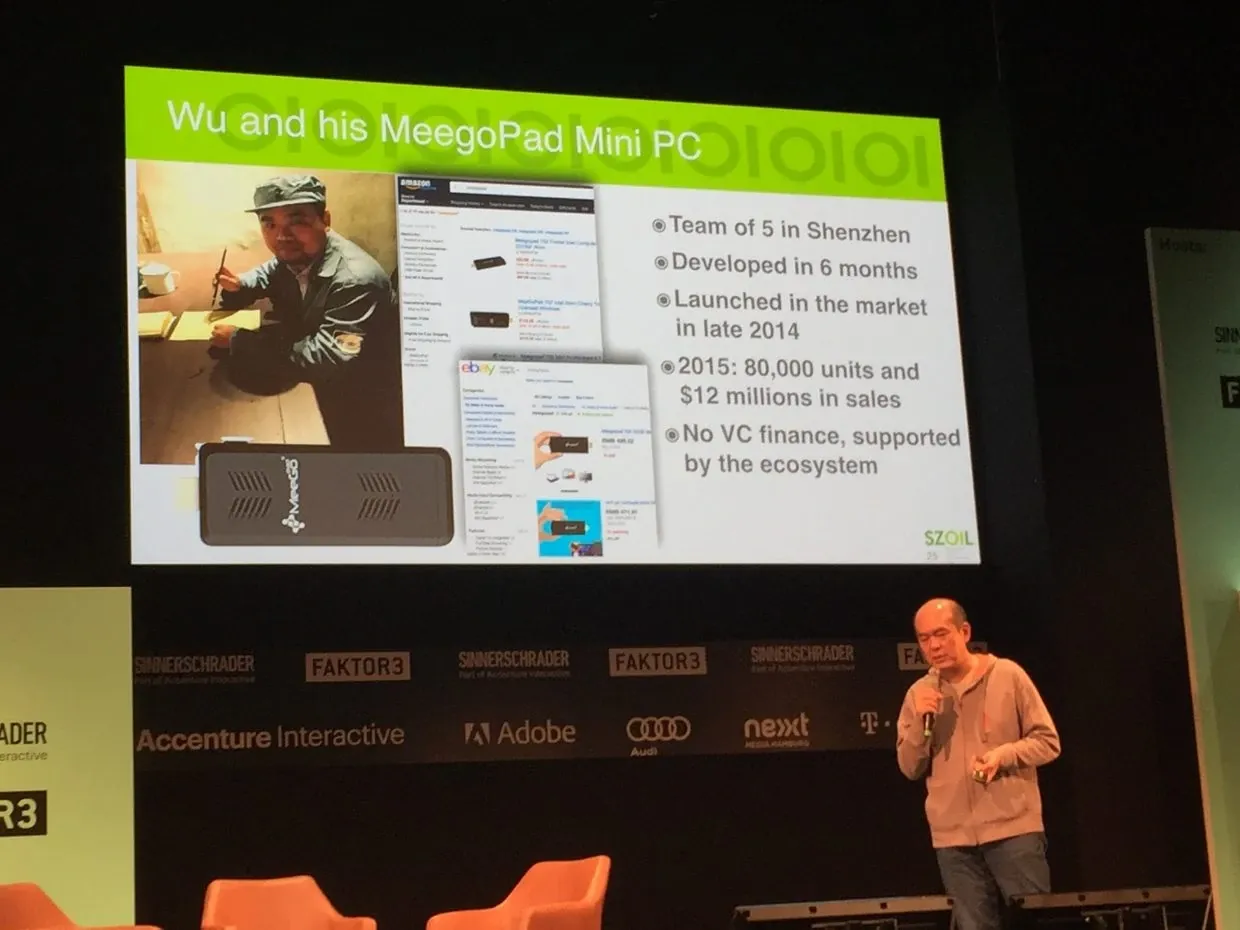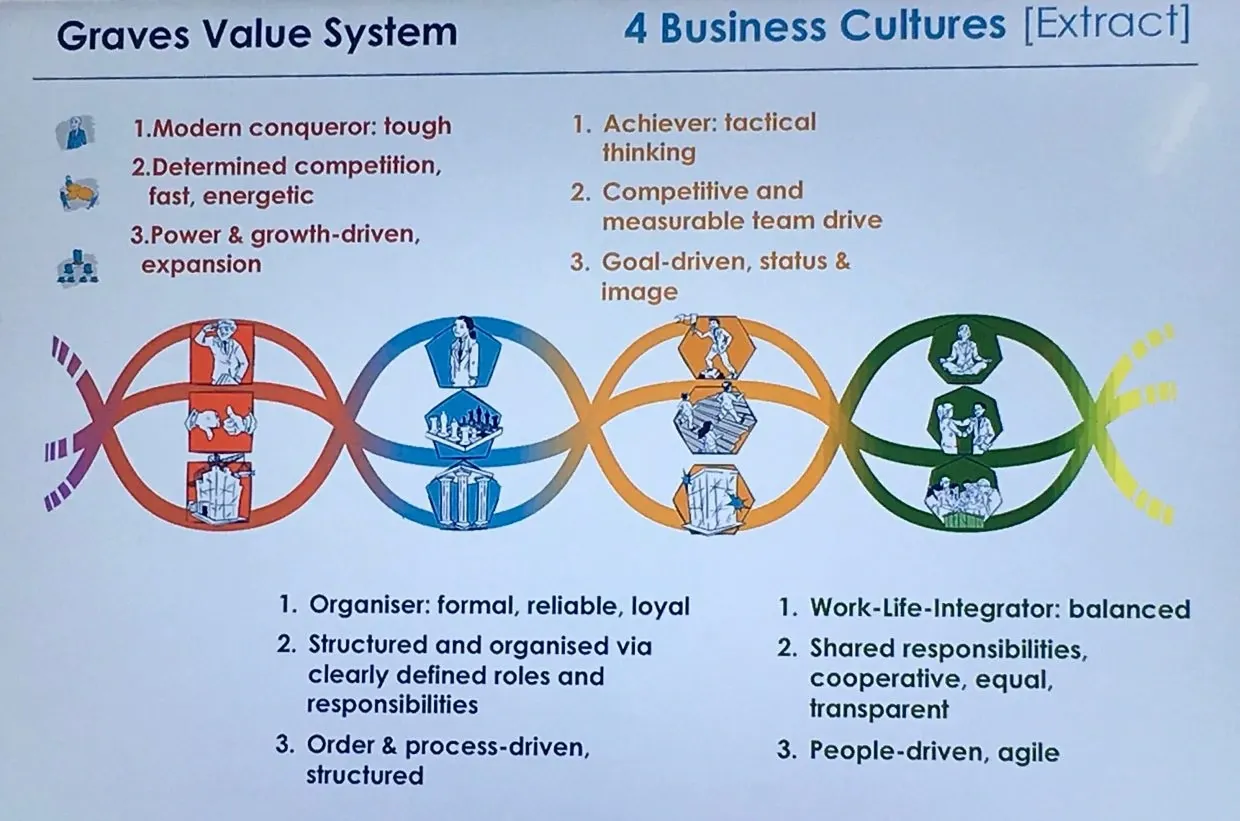So I spent 2 days in Hamburg with a big bunch of nerds (self-declared) who are involved with digital and the business of the future at the Next17 Conference entitled “Digital Sucks!”. You may not have been able to join this year, or you are French and didn’t know about it (apparently I was the only French person in the room) so I would like to share with you my 5 take-aways:
1- Where to innovate?
Well, if we ask Bruce Sterling (futurist, journalist, science-fiction author, design critic) what the world will be like in 2027, he says a bunch of “old people in bigger cities afraid of the sky – that’s the future”. He further urges us to accept it and do something about it. So I would translate that the 3 sectors of the future are the seniors, the mega cities and the environment. Do with that what you like.
From Jamie Bartlett’s (author of “the Dark Net”) speech, you may want to watch various radical political movements – not to laugh at them (well just a little though) or to join them (surely not) – but to listen to their perspectives as it might give you some interesting insights about the future, some new trends and how other people think (transhumanism, new forms of democracy and decision-making, etc.).
From David Mattin’s keynote and Trendwatching workshop, you may want to watch what are the consumers’ emerging expectations (using their consumer trend canvas) to get some ideas of potential innovation or to “tweak what you already do to cater for other people”.

For example, the lawyer chatbot which initially was helping people to complain about their parking tickets in London and then was tweaked to help the homeless. David encourages you to address meaningful problems and ask big questions: what would be the consequences of a given policy or social decision? Improbable is creating virtual worlds to simulate a society for example and test hypothesis.

David Li (founder of Shenzhen Open Innovation Lab – SZOIL) talks about the relationship between the West and China: it shouldn’t be a one-way train (goods shipped out of China) but a two way train. Meaning yes the Chinese market is huge but please sell them value. The Chinese don’t have a history with big western brand – so they have no loyalty to them, so they only buy brands that create real value for them. Ask Chinese and German farmer “what has the internet recently done for you? For your business?” David shared the example of Alibaba bringing value even to more remote area, not just richer urban markets.
And this leads to my 2nd take-away:
2- Why look to China?
Bruce Sterling had mentioned to ignore UK and do the opposite of what they say or do, suggested to Europeans to be closer to Japan and Canada, and to look to China. From the number of participants at David Li and Tricia Wangs’s workshop on China, it was obvious that Europeans were already listening.
When I asked David Li: “What elements of culture made Shenzhen the way it is today?” He replied : “Collaborative survival instinct working with Moore’s Law”. Indeed, he shared in his keynote how Shenzhen was working: it is a mass innovation collaboration, with innovation from the streets, a big chaos that enables the real innovations to emerge and succeed fast. On one side the Shenzhen way is very attractive to innovation sluggish Westerners because it is dynamic and competitive which is accelerating innovation. On the other, the openness which is a must here is scaring the IP overly-conscious Corporates. In the end, on the market of EV for example, there are 459 companies in China which are manufacturing cars. They are all competing against each other, play dirty, grow fast, which is very different from the west where a few control the markets so they compete on same terms (slug fight) not much drive to innovate fast, test things… Are Western car manufacturers ready to compete with the 1000€ electric car? How long before their brand attractiveness loses its appeal?
One interesting piece of advice from David Li: “Speak to older guys sat in business class traveling between China and Western world, they have worked there for 25 years and have built relationships, they understand how China works.”

Understanding China is key and one thing I learnt was that people do things (like build a new EV, or create a new service for bike sharing) then the regulators come in. Meaning that they only regulate once the innovation is in place. So the regulators do not stifle innovation. Ok in cultures like ours which are very risk averse, I can already hear the doubts and fears like how safe are these cars if there is no regulations yet? Ok it is a good point and still it is worth exploring the Shenzhen model if we want to unstuck our industries.
Failure is an intrinsic part of the mass collaboration innovation approach they have in Shenzhen, and this leads to my 3rd take-away:
3- Why is failure a must?
Ok, you’ve heard it before, you know intellectually failure is part of innovation but still you don’t want to fail, you are scared of failing, so Samuel West made it super fun with his museum of failures in Sweden, to demistify it. People say failure is a learning experience but in our corporate cultures we still see it as bad. Nobody wants to fail. We still hear things like “act like an entrepreneur” and at the same time we hear “do things right first time”. No surprises then that employees don’t try new things.
LEARNING IS THE ONLY WAY TO TURN FAILURE INTO SUCCESS
This is one of the reasons corporate culture transformation usually fails: only the vision (one element of culture) is addressed and not the underlying DNA and values of the company. Of course we need to value business and brand ROIs but we also need to value other measures of success: scouting ROIs (learning from market experiments – whether they succeeded or not), agility ROIs (what new skills teams have developed in the process of experimenting) and wider ROIs such as cultural effects (how the mindsets have evolved, what new behaviors are being demonstrated, how the teams have increased their readiness for change).
Samuel West’s closing comment says it all:
“It’s a shame that the risk of embarrassment limits the chance to learn from failures”.
Understanding failure is key to learn and get better, so this leads to my 4th take-away:
4- Who is the “failed-to-launch” culprit?
From Tricia Wang, we learned that : “Innovation is not lacking”, culture is the culprit. Poor decision making is stifling innovation. Corporations are still making decisions based on old models needing extensive analysis of the knowns. However with innovation and the speed of technology and society evolution, the unknowns have tremendously increased.
“Companies can often succeed at innovation but still fail miserably at decision making”. Tricia Wang
She further explains that: “people who receive reports are considered more knowledgeable and important than the people who make reports” and advocates for a “department of the unknown”. Again this is a cultural issue, with the typical risk averse tendency of corporation and their need to report to and reassure shareholders.
She insists that “innovation can’t be bought”. Well yes you can buy technology, but how good is the company at integrating it? At making the most of it and getting value out of it? How good a corporation is at integrating an innovation depends on its level of cultural transformation readiness. For many companies, innovation is just a nice word written on their website to describe their brand. How it is embodied within is often a very different story.
The workshop facilitated by Rhys Photis from GPi was very enlightening on this aspect. His diagnostic tool based on 7s (McKinsey – Tom Peters & Robert Waterman) and Clare W Graves’s stages of maturity of a corporation, clearly demonstrated that a company and its different departments can be functioning in very different cultures and hence work against not only each other but against any initiative to transform the business.

So again the full-stack approach of cultural transformation I’ve mentioned so many times already is key.
So to finish:
5- Digital doesn’t suck, people do!
I got that one from Bruce Sterling and his 2027 vision. “It’s not digital that sucks it’s fraud, exploitation, denial, spying, political games…” His advice is to “live in truth”. That message was also reinforced by David Mattin from Trendwatching with the need to be more transparent within organisations: “every department is the marketing department”.
With all the Uber of the world, known or not, we now understand that company cultures are not only the key for digital transformation and other changes towards better places to work and to explore the future, they can also be a big hindrance to business success – Uber losing the London gig was announced during the conference, wow.
Obviously there were many other messages at NEXT17 about AI, block chain, minimalism, attention economy, dark net, etc.
So I leave you with one final thought from Bruce Sterling:
“In 2027, Moore’s Law is dead – its mausoleum is Apple’s HQ”
That was Bruce being a realist not a dystopian. So think about what trend and assumptions you are basing your next move on.


